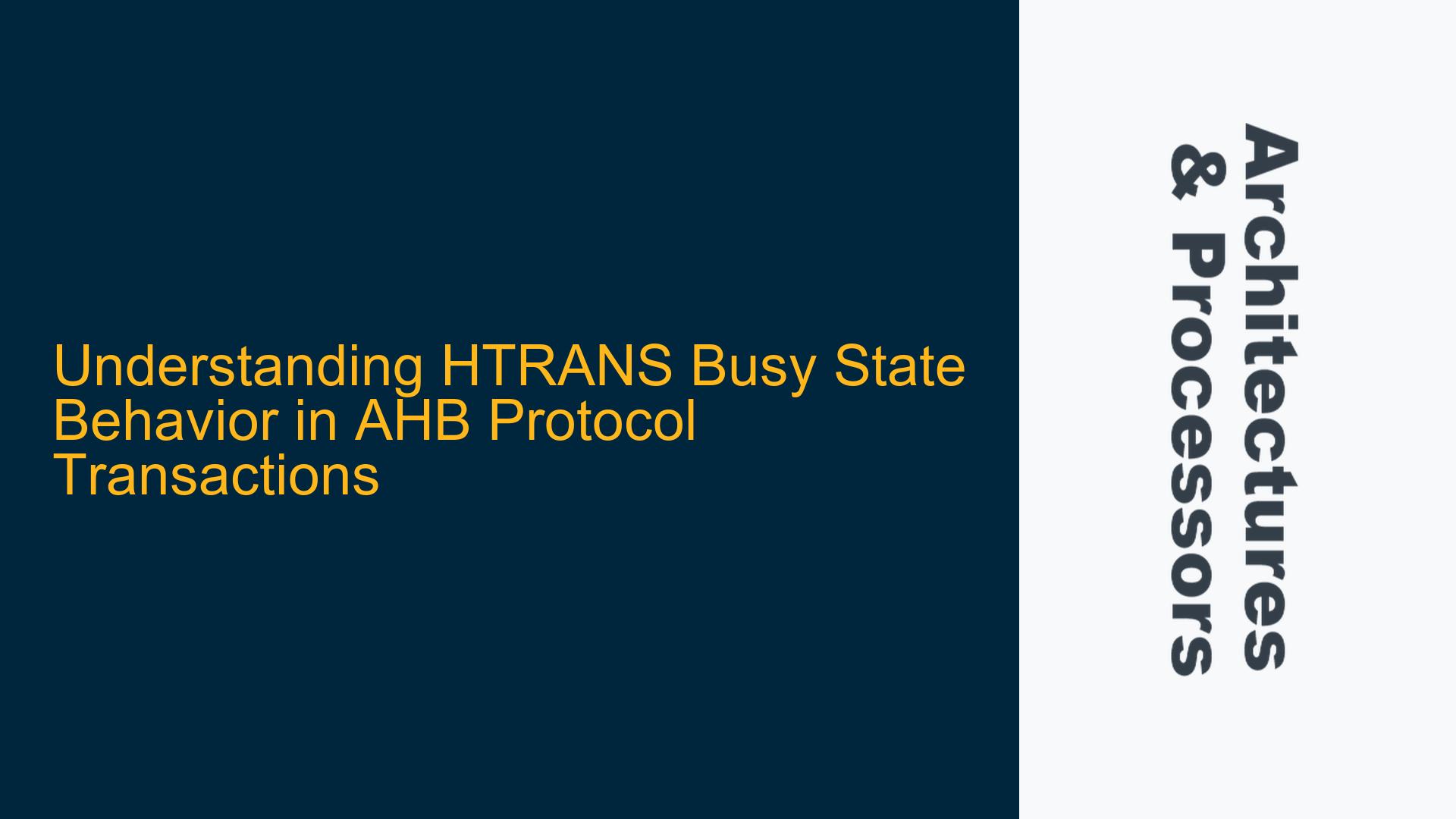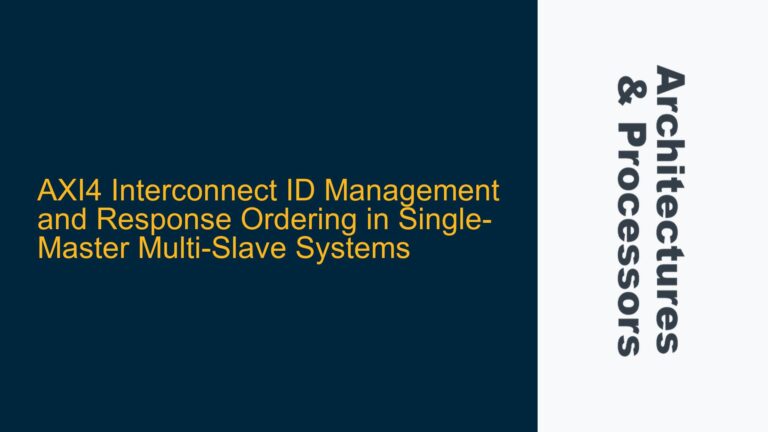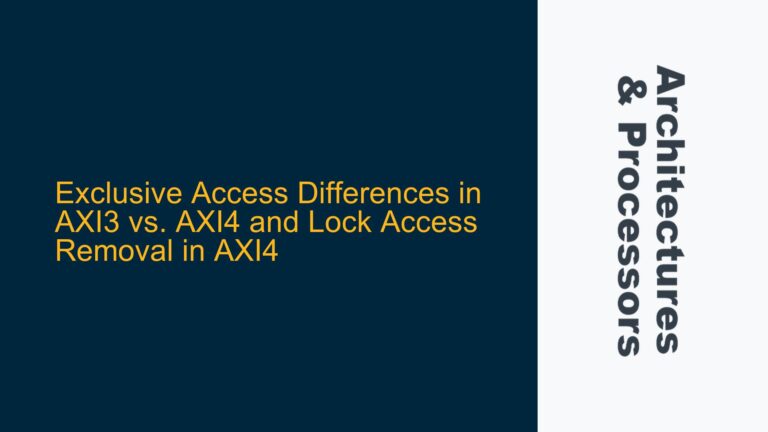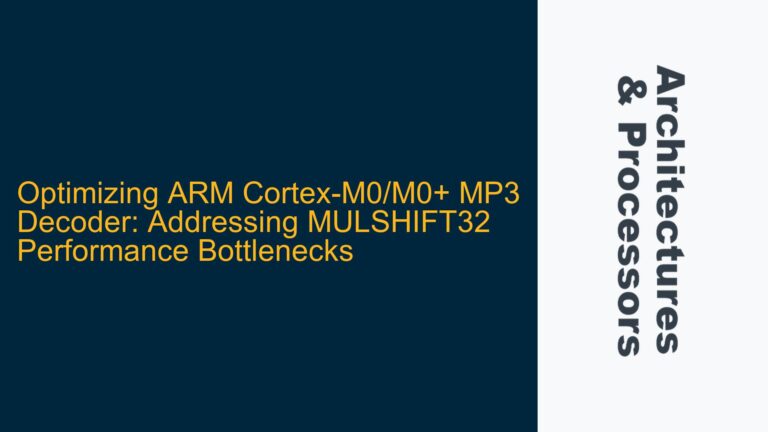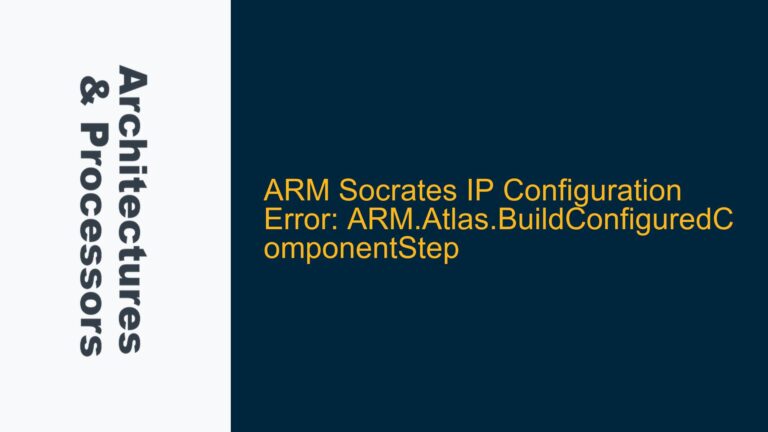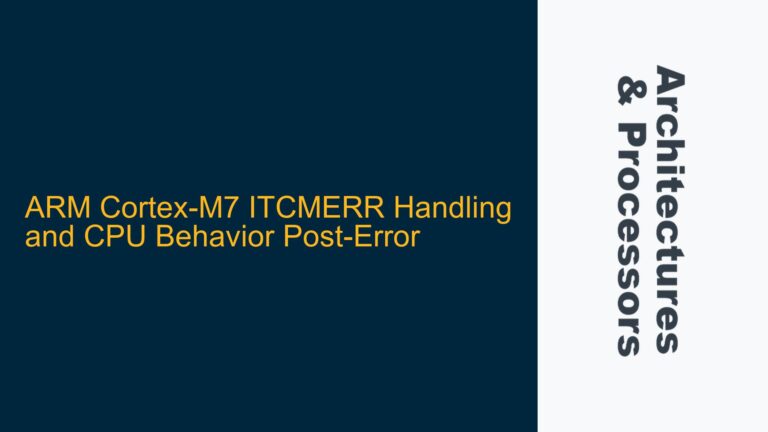HTRANS Busy State and HREADY Signal Interaction During AHB Read Operations
The interaction between the HTRANS signal and the HREADY signal in the ARM AHB (Advanced High-performance Bus) protocol is a critical aspect of ensuring correct data transfer between the master and slave devices. The HTRANS signal indicates the type of transfer being initiated by the master, while the HREADY signal is used by the slave to indicate whether it is ready to complete the data phase of the transfer. The HTRANS signal can take on several states, including IDLE, BUSY, NONSEQ, and SEQ. The BUSY state is particularly important as it allows the master to insert wait states into the transfer without changing the address or control signals.
In the scenario described, a 4-beat read operation is initiated with a NONSEQ transfer at time T0-T1. The master then inserts a BUSY transfer at T1-T2, during which the slave asserts HREADY low to indicate that it needs additional time to process the data. At T2-T3, the slave asserts HREADY high to indicate that the data is ready, but the master’s HTRANS signal remains in the BUSY state. This raises the question of whether the data presented on the HRDATA bus during T2-T3 (D0_a1) is valid or should be ignored.
The confusion arises from the specification’s statement that BUSY transfers must be ignored by the slave. However, this requirement applies only to the data phase of the BUSY transfer itself, not to the data phase of the preceding NONSEQ transfer. During T2-T3, the data phase of the NONSEQ transfer is being completed, and the BUSY transfer is in its address phase. Therefore, the data presented on HRDATA during T2-T3 (D0_a1) is valid and should be sampled by the master.
Misinterpretation of AHB Protocol Phases and BUSY Transfer Handling
The root cause of the confusion lies in a misinterpretation of the AHB protocol’s two-phase operation: the address phase and the data phase. Each transfer in the AHB protocol consists of these two phases, which are pipelined. The address phase indicates the type of transfer being initiated, while the data phase is where the actual data transfer occurs. The data phase of a transfer is always associated with the address phase of the previous transfer.
In the given scenario, the NONSEQ transfer’s address phase occurs at T0-T1, and its data phase occurs at T1-T3. The BUSY transfer’s address phase occurs at T2-T3, and its data phase occurs at T3-T4. The key point is that the data phase of the NONSEQ transfer (T1-T3) is independent of the address phase of the BUSY transfer (T2-T3). The slave’s assertion of HREADY low during T1-T2 is a response to the NONSEQ transfer, not the BUSY transfer.
The specification’s requirement that BUSY transfers must be ignored by the slave applies only to the data phase of the BUSY transfer itself. During the data phase of the BUSY transfer (T3-T4), the slave must return HREADY high and HRESP OKAY, as no data transfer is associated with the BUSY transfer. However, during the data phase of the NONSEQ transfer (T1-T3), the slave is expected to provide valid data on HRDATA, regardless of the state of the HTRANS signal during the address phase of the BUSY transfer.
Correcting Slave Design to Properly Handle BUSY Transfers and Data Validity
To ensure correct operation of the slave in handling BUSY transfers and data validity, the following steps should be taken:
-
Separate Address and Data Phase Handling: The slave must clearly separate the handling of the address phase and data phase of each transfer. The address phase of a transfer should be processed independently of the data phase of the previous transfer. This ensures that the slave correctly identifies the type of transfer being initiated and prepares the appropriate response.
-
Proper HREADY Signal Management: The slave must correctly manage the HREADY signal to indicate when it is ready to complete the data phase of a transfer. During the data phase of a NONSEQ transfer, the slave should assert HREADY low if it needs additional time to process the data. Once the data is ready, the slave should assert HREADY high, allowing the master to sample the data on HRDATA.
-
Ignoring BUSY Transfers During Data Phase: The slave must ignore the BUSY transfer during its data phase. This means that during the data phase of a BUSY transfer (T3-T4 in the scenario), the slave should return HREADY high and HRESP OKAY, as no data transfer is associated with the BUSY transfer. The slave should not attempt to provide data on HRDATA during this phase.
-
Valid Data Sampling During NONSEQ Data Phase: The slave must ensure that valid data is provided on HRDATA during the data phase of a NONSEQ transfer, regardless of the state of the HTRANS signal during the address phase of a subsequent BUSY transfer. In the scenario, the data presented on HRDATA during T2-T3 (D0_a1) is valid and should be sampled by the master.
-
Verification of Slave Behavior: The slave’s behavior should be thoroughly verified using simulation and formal verification techniques. This includes checking that the slave correctly handles BUSY transfers, properly manages the HREADY signal, and provides valid data during the data phase of NONSEQ transfers. Corner cases, such as back-to-back BUSY transfers and mixed transfer types, should be tested to ensure robust operation.
By following these steps, the slave can be designed to correctly handle BUSY transfers and ensure that valid data is provided during the data phase of NONSEQ transfers. This will prevent the confusion and potential errors that can arise from misinterpretation of the AHB protocol’s two-phase operation and the handling of BUSY transfers.
Detailed Analysis of AHB Protocol Timing and Signal Interactions
To further clarify the interaction between the HTRANS and HREADY signals, let’s analyze the timing diagram provided in the scenario in more detail. The timing diagram shows the following sequence of events:
-
T0-T1: The master initiates a NONSEQ transfer by setting HTRANS to NONSEQ and providing the address and control signals. This is the address phase of the NONSEQ transfer.
-
T1-T2: The master sets HTRANS to BUSY, indicating that it is inserting a wait state. The slave asserts HREADY low during this period to indicate that it needs additional time to process the data for the NONSEQ transfer. This is the data phase of the NONSEQ transfer, extended by the wait state.
-
T2-T3: The slave asserts HREADY high, indicating that the data for the NONSEQ transfer is ready. The master’s HTRANS signal remains in the BUSY state during this period. The data presented on HRDATA (D0_a1) is valid and should be sampled by the master.
-
T3-T4: The address phase of the BUSY transfer occurs during this period. The slave must ignore the BUSY transfer and return HREADY high and HRESP OKAY during the data phase of the BUSY transfer (T3-T4). No data is transferred during this phase.
-
T4-T5: The address phase of a SEQ transfer occurs during this period. The data phase of the SEQ transfer will occur at T5-T6, during which the slave will provide valid data on HRDATA.
The key takeaway from this analysis is that the data phase of a transfer is always associated with the address phase of the previous transfer. The state of the HTRANS signal during the address phase of a subsequent transfer does not affect the validity of the data provided during the data phase of the current transfer.
Practical Considerations for AHB Slave Design
When designing an AHB slave, several practical considerations must be taken into account to ensure correct operation and compliance with the AHB protocol:
-
Address Decoding: The slave must correctly decode the address provided during the address phase of each transfer to determine if it is the target of the transfer. This involves comparing the address with the slave’s address range and generating a select signal (HSEL) if the address falls within the range.
-
Control Signal Handling: The slave must correctly interpret the control signals provided during the address phase, including the transfer type (HTRANS), transfer size (HSIZE), and burst type (HBURST). These signals determine how the slave should process the transfer.
-
Data Buffering: The slave may need to buffer data during the data phase, especially if it requires additional time to process the data. This can be achieved using FIFOs or other buffering mechanisms to store data until it is ready to be transferred.
-
Error Handling: The slave must be able to handle error conditions, such as invalid addresses or unsupported transfer types. This involves generating appropriate HRESP signals (e.g., ERROR or RETRY) to indicate the error condition to the master.
-
Performance Optimization: The slave should be designed to minimize latency and maximize throughput. This can be achieved by optimizing the data path, reducing the number of wait states, and using pipelining techniques to overlap the address and data phases of multiple transfers.
-
Verification and Testing: The slave’s design must be thoroughly verified using simulation, formal verification, and hardware testing. This includes testing corner cases, such as back-to-back transfers, mixed transfer types, and error conditions, to ensure robust operation.
By considering these practical aspects during the design and implementation of an AHB slave, designers can ensure that the slave operates correctly and efficiently within the AHB protocol framework.
Conclusion
Understanding the behavior of the HTRANS BUSY state and its interaction with the HREADY signal is crucial for designing compliant and efficient AHB slaves. The key to resolving the confusion lies in recognizing the two-phase nature of AHB transfers and the independence of the data phase from the address phase of subsequent transfers. By following the guidelines and considerations outlined in this analysis, designers can ensure that their AHB slaves correctly handle BUSY transfers, manage the HREADY signal, and provide valid data during the data phase of NONSEQ transfers. This will result in robust and reliable AHB-based systems that meet the performance and functionality requirements of modern SoC designs.
